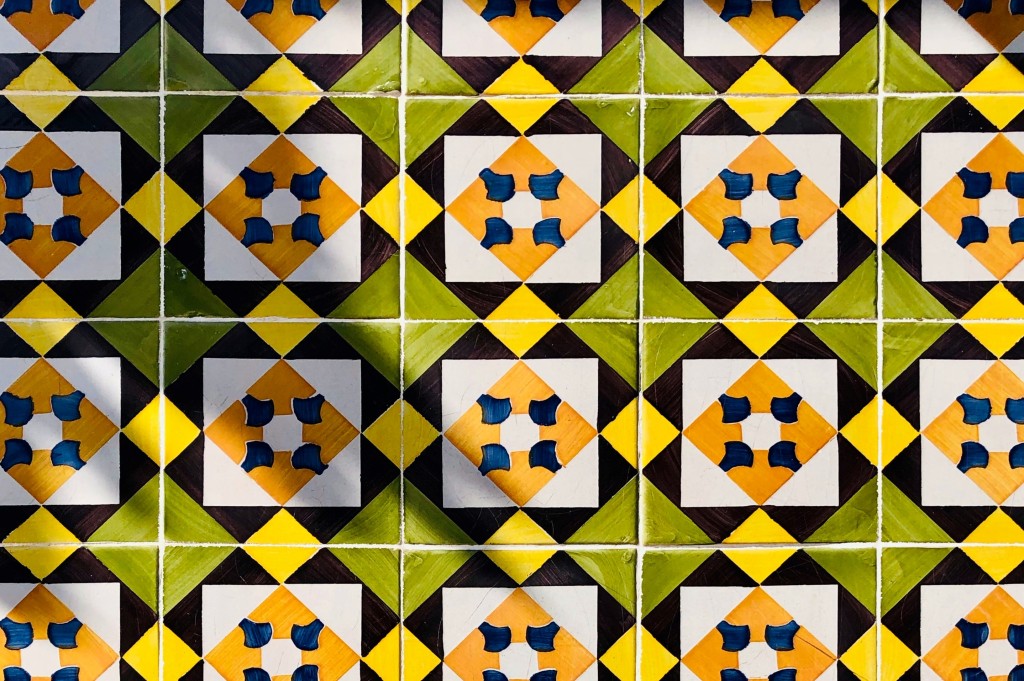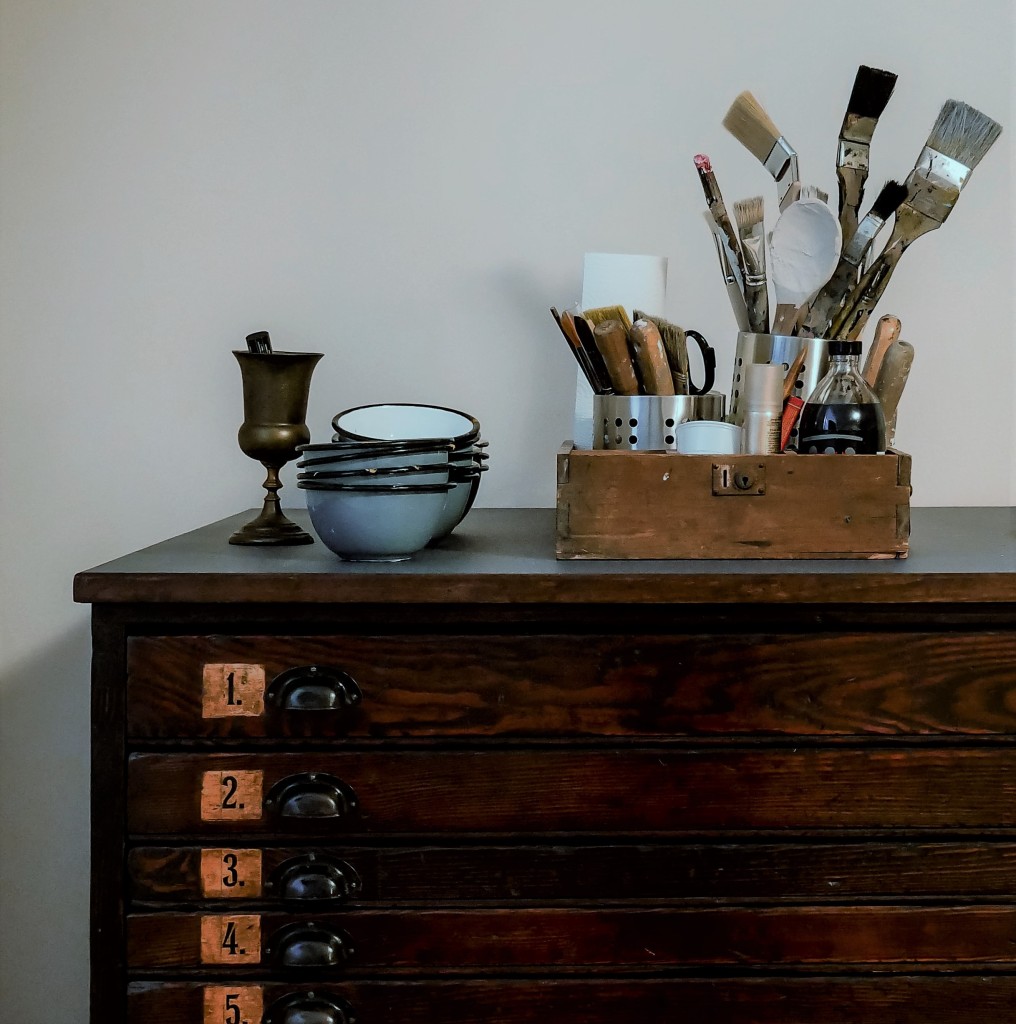
The idiom ‘from pillar to post’ both indicates the role of structure in a journey and, at the same time, cautions that substance, purpose and clarity are necessary to a fruitful experience. In the previous post, I discussed divergence and convergence as ideas that can help the academic to create regular patterns in curriculum design. The strength of pattern is that it suggests substance: a repeating pattern offers the predictability that the viewer needs. It allows them to become part of the creative experience by colouring within the pattern’s outlines. To do this, they use their prior knowledge, experience, or imagination. The viewer becomes colourist. When multiple colourists bring their aesthetics to the task, we create a discourse through collaboration.
In learning design, the patterns and shapes are different, but still the academic plays with ideas like ‘less is more’; leaving space for the learner to bring themselves to the task. The academic avoids filling in the space knowing that it would be futile to make all the aesthetic decisions for each and every student. Leaving space becomes an inclusive learning strategy; one that accommodates their students’ diverse perspectives.
The art of teaching to an active learning philosophy, it seems to me, is about understanding how to create loosely structured learning maps so that each student can bring their aesthetic to it. Our challenge is to create a just enough structure so that our students can fluently navigate their topic or course, without them getting lost along the way; or rather, without them getting irretrievably separated from the core narrative and its intended outcomes. This points to another topic: the value of deviance and self-determination.
Map reading
I incorporate maps in my use of twalks and learning walks. In twalks, where participants are not co-located geographically, the idea of map is incongruous yet perhaps even more important than for situations in which participants are co-located. But how can you use a common map if you are not co-located? While the twalk map depicts common landmark types (i.e. library, lawn, staircase, etc), so that the activities can make reference to the meanings of such places, they can’t do much more than that. The value in a learning twalk often comes from observing the difference between ‘my library’ and ‘your library’; in that way we discover, through our own experience or the storiy we share, ‘library-ness’.
Memory maps – learning as cartography
Your aim as a student on completing a twalk, a walk, or any other active learning event, is essentially to create a memory map.
You are given stimuli, challenges, questions, and discussions and these become structures in your metaphorical map. Each of these constructions has some solidity and acts as a point of reference.
Your learning comes from your response to the stimulus, how you address the challenge, your response (right, wrong or different) to the questions, and what you gather from and contribute to the discussions. Your contribution, as a learning participant, is to distil your memories and to add colour, substance and annotations to your own memory map. That is active learning.

This points us to the relationship between active and reflective learning and the value of portfolios for learning: collections of personalised memory maps (significant artefacts), carefully stored, curated, and ready to be reviewed by the learner later to inform subsequent explorations.
Co-creating memories
This idea of memory mapping is congruent with the social construction of knowledge. Learning alone can be soulless and dispiriting. In my experience, learning is lifted by comparing what you think to what others think. This can be competitive, but mostly the value is in co-operation and the appreciation of other, different or complementary ideas, and especially the growth of ideas and knowledge that comes from thinking together. In social situations, your experience, alongside the experience of your collaborators, is to create a rich picture from the bare bones scaffold of the landmark activities given you by your teacher, leader, or the situation itself.
Objects, pictures and interpretation
I have worked with colleagues over the years who have been captured by the idea objects as a tangible focus for learning through conversation and contemplation.
For example, Beatriz Acevedo and myself interviewed Alison Greig for our Exquisite Corpse podcast. In the discussion, Alison shares how she engaged her students in learning about systems and sustainability. With participants all over the world, Alison engaged them in discussing ideas by using self-selected geographical landmarks. With minimal framing, they used these as the basis for understanding complex concepts: from a canal in Manchester to a fish market in Hong Kong. In the following recording, Alison presents some useful insights from this experience.
Alison’s use of self-selected objects in the landscape is a good example of how objects lend themselves to personalised and interpretive discussion. Such analytical devices elicit conversational learning, creating a fluid and immersive experience where the learner has a high degree of agency over their learning. At the same time, the collective contrivance of the object in the landscape, in this case, connects the thinking, and learning, of all those who take part.
In conclusion: daring to provide no more than just enough
Whether it is outlined patterns or objects, the active learning teacher scaffolds learning by creating a learning environment composed of just enough direction to send students on their way with purpose and clarity. Providing clarity and removing clutter go hand-in-hand when the learner is intent on creating their own substance from a process of mapping memories.

I love this representation, “The art of teaching to an active learning philosophy, it seems to me, is about understanding how to create loosely structured learning maps so that each student can bring their aesthetic [their whole selves] to it.” I think the process of mapping our understandings applies to everyone who is grappling with complexity and uncertainty. The idea ‘how do I know what I understand until I have mapped it’ springs to mind, which usually involves making a diagram of some kind to make my thinking explicit. Maps are all about relationships between things and they are an essential tool for understanding and working in an ecological world.
Thanks Norman, and maps can take so many forms, including text. Mapping helps us to orientate and grasp the scope and begin to see what is significant in the (our) landscape.
Pingback: Mapping my learning: visualising not just being visual | Tactile
Pingback: Deviation and self-determination #activelearning | Tactile